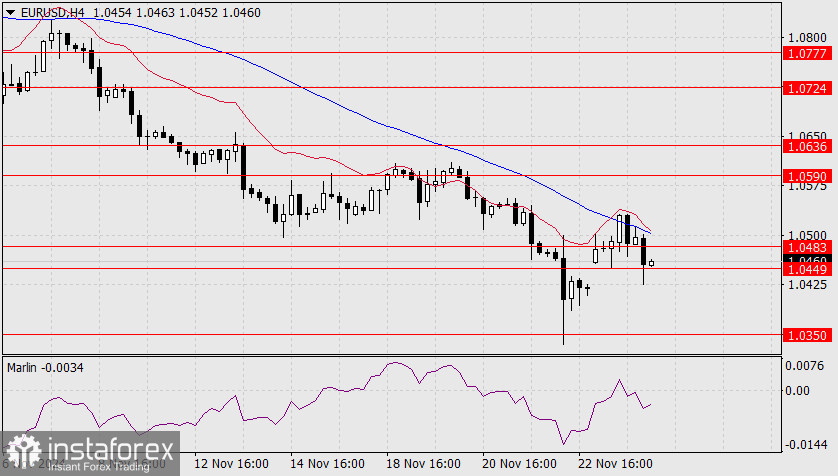On Monday, unlike other anti-dollar currencies, the euro did not close its gap but instead attempted to break out of the 1.0449/83 range. After encountering resistance on lower timeframes, the price fell below the range this morning and closed the gap. This allows the euro to initiate a correction, potentially encompassing the entire movement since September 25.

A reversal above the upper boundary of the range (1.0483) would signal further growth toward the 1.0590–1.0636 range. If this range is breached, the next target is 1.0724/77. This is the primary scenario.
If the price consolidates below 1.0449, the support at 1.0350 might not hold, allowing the price to extend its decline toward 1.0250. While this scenario is considered an alternative for now, its likelihood is high due to the near-panic observed in Asian equity markets during today's session (Nikkei 225: -1.20%, S&P/ASX 200: -0.50%, China A50: -0.10%) alongside declining commodity prices.

On the four-hour chart, the price reversed yesterday from the resistance of the balance and MACD lines. The Marlin Oscillator is currently declining from the boundary of the bullish trend territory.
In the current situation, the oscillator is secondary; all focus is on the price. The euro may find the strength to rise above the range and indicator lines.





















